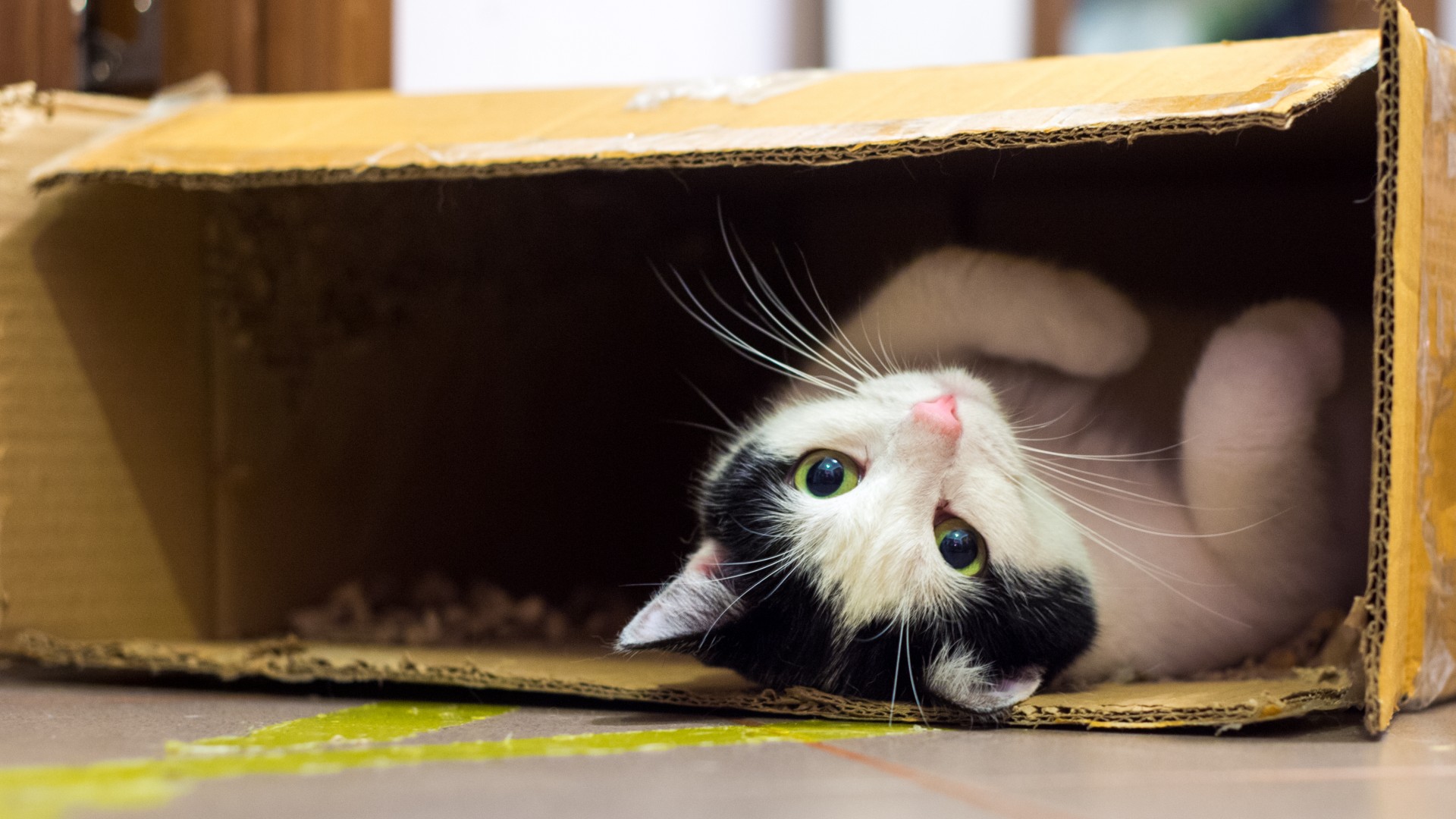
Why do cats love boxes so much?
Why do our feline friends squeeze themselves into tight spaces?

It's a truism perhaps best exemplified by viral memes: Cats love to cram themselves into boxes or whatever other tight spaces they can find. But why do our feline friends do this? Why do cats love boxes so much?
The behavior comes from a simple animal desire, said Gabriella Smith, a doctoral candidate in comparative animal cognition at the University of Veterinary Medicine in Vienna.
"What we know is that it is a form of comfort," Smith told Live Science. "This makes sense from an evolutionary standpoint. Side pressure is comforting."
Related: How much do cats and dogs remember?
This sense of comfort is especially crucial in stressful situations, such as when a street cat is brought inside for the first time. In a 2019 paper published in the journal PLOS One, Dutch scientists noted that the ability to hide was crucial in lowering the stress levels of cats that had just arrived at an animal shelter. The researchers measured the stress levels of the cats using the non-invasive Cat-Stress-Score, which assesses stress levels in cats based on their posture, vocal behavior and activity level. The scientists also found that when the cats were deprived of shelter, they would flip over their litter boxes to hide underneath them.
Cats' love for boxes extends beyond three-dimensional structures. In 2021, Smith spearheaded a citizen science paper, meaning that she asked the public (and their cats) to contribute to the experiment. The study, published in the journal Applied Animal Behaviour Science, explored whether cats would sit inside a Kanizsa contour, a rectangle created by corners that are taped off on a floor.
Unlike a box, a Kanizsa contour doesn't have walls, making it two dimensional. "The 2D experiment, in particular, is a look into their visual cognition and the perception of borders," she said. In other words, cats love boxes so much, they'll even sit in fake, 2D ones.
Sign up for the Live Science daily newsletter now
Get the world’s most fascinating discoveries delivered straight to your inbox.
So how would this behavior benefit cats? One theory is that it helps them avoid dangerous situations. "Why that would make sense from an evolutionary standpoint is, you don't want to walk into things; you don't want to fall off a cliff, you want to understand when two things have different color intensities," Smith said.
Another possible explanation, which has not been tested scientifically, is that cats like boxes because they are ambush predators. After all, as any cat owner can attest, house cats love to use boxes, corners and just about any elevated surface to conceal themselves before pouncing on an unsuspecting toy — or human.
"My cat does it if we're playing — she'll hide behind something so that she can pounce," Smith said. "That all makes sense when we think about 3D enclosures, but there's even less known about why it translates to something 2D on the floor."
And our housebound felines aren’t the only cats that love boxes. According to zoo observations, big cats — including pumas, lions and tigers — enjoy sitting in and playing with boxes of all sizes.
Originally published on Live Science.

John Arnst is a freelance science writer and editor based in Washington, DC. He writes about every corner of life sciences he can get his hands on, and much of his work can be found in the magazine for the American Society for Biochemistry and Molecular Biology, where he was a staff writer for four years. He has degrees in English literature and biology from the University of Florida and two very vocal black cats.










